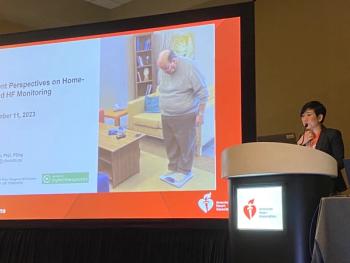
More Older Adults Plan to Use Digital Health Technologies as They 'Age in Place'
An overwhelming majority of survey respondents (93%) said aging in place is an important goal of theirs. Aging in place is considered the ability to live in one’s home and community safely, independently, and comfortably, regardless of age, income or ability level, according to the CDC.
Most older adults are using or plan to use assistive and digital health technologies as they age in place in the comfort of their homes.
U.S. News & World Report recently surveyed 2,000 U.S. adults aged 55 and older who shared why they are or aren’t using assistive health-related technologies, what their goals were of aging in place, which technologies they use the most and what their experiences were.
An overwhelming majority of respondents (93%) said aging in place is an important goal of theirs. Aging in place is considered the ability to live in one’s home and community safely, independently, and comfortably, regardless of age, income or ability level, according to the CDC.
The report shared the nation’s population is getting older and there will be more older adults in the U.S. than children in the coming decades. The U.S. Census Bureau projects there will be
The Census also noted the number of people aged 65 and older in the U.S. has grown from 35 million in 2000 to
In the report, the U.S. News team used the third-party survey platform Pollfish to conduct the national survey. Participants were comprised 57% of females while those identifying as male represented the remaining 43%.
Dara shared there are many reasons adults 55 and older may choose to incorporate health-related technologies into their day-to-day routines, but nearly half (49%) claim that general aging is their primary reason. Mobility impairments (28%), such as arthritis and fibromyalgia, and hearing impairments (22%) are the second- and third-most-reported catalysts for using assistive or health-related technologies, according to the report.
Of the 47% surveyed who say they don't use assistive or health-related technologies (70%) don’t feel they need them yet. Another 16% shared they can’t afford the technologies, and 14% reject the technologies because they don’t want to lose their independence.
Those who use some type of assistive or health-related technology (53%), mainly use medical or health-related mobile apps (25%) and wearable medical or health-related trackers (17%). Service-related apps that help with things like grocery and food delivery are also popular, with 24% of respondents saying they use them.
The COVID-19 pandemic also brought more seniors online to stay connected with others and limit exposure to the virus. According to U.S. News’ Aging in Place With Assistive Tech Survey, more than a third of respondents increased their use of assistive or health-related technologies due to COVID.
Though most assistive technologies provide benefits toward aging in place, there are of course challenges.
When using assistive or health-related technologies, people 55 and older say the things that matter most are that it’s easy to use (75%), easy to set up (50%), accessible using a mobile app (38%), and wireless (37%).
To tackle the learning curve of using their devices, respondents say they rely on product guides (30%), family and friends (22%), and health care workers (19%) to help them.
Cost-of-living increases also make it more difficult for older adults to age in place, as well as a concern around privacy older adults have.
Though, as the U.S. population continues to age, it’s clear older adults generally have a strong desire to age in place, or live in their homes for as long as possible.
Data revealed 88% of respondents assert that assistive or health-related technologies have improved their quality of life. Using assistive or health-related technologies from home not only makes life for older Americans easier, but it also provides a sense of independence for more than half of survey respondents (55%). They also feel notably safer (44%) and healthier (33%) when using these technologies.
As older adults experience the changes and challenges that come with aging, the survey reveals they are willing to adopt new assistive or health-related technologies to extend their time in their homes and make it as safe and easy as possible.
Newsletter
Get the latest industry news, event updates, and more from Managed healthcare Executive.





















































